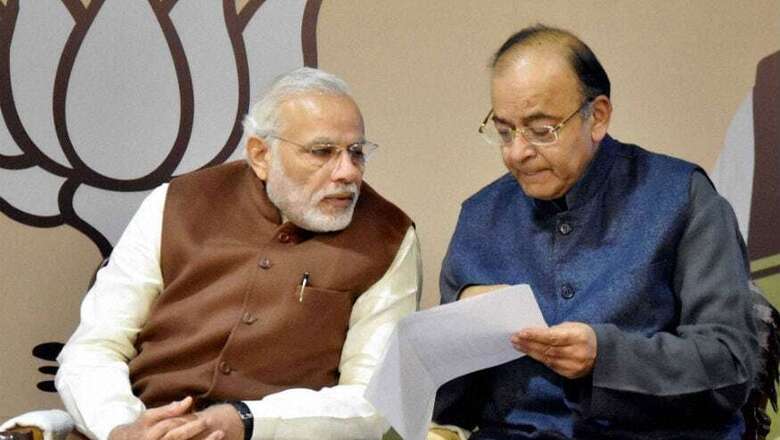
views
New Delhi: A committee, which was appointed by the Modi government before demonetisation to review government spending, may give Arun Jaitley the financial wiggle room to meet spending requirements in the Union Budget 2017 to offset a possible economic slowdown.
The FRBM Review Committee, which is due to submit its report next week, may give recommendations which will allow the government to bypass the Fiscal Responsibility and Budget Management (FRBM) Act and announce increased spending in the budget without breaching its fiscal deficit commitments, a source with knowledge of the matter told News18. This will give Finance Minister Arun Jaitley and Prime Minister Narendra Modi the leeway to counter the economic downturn of demonetisation.
The recommendation may be to have a ‘fiscal deficit range’ in place of the existing fixed numbers. For instance, a range of 3% to 3.5% for the fiscal deficit rather than a fixed number of 3 %, can let the government increase spending without running afoul of the FRBM, a Parliamentary Act. The Committee is exploring this option, according to the source. The government will have to amend the FRBM Act to incorporate the changes.
The FRBM Review Committee, headed by former Revenue and Expenditure Secretary NK Singh, was set up in May 2016 to review the working of the FRBM Act and give recommendations on fiscal consolidation and the changes required in the context of volatility in the global economy. Part of the Committee’s mandate is also to examine whether the fiscal deficit target should be within a range rather than a fixed number.
The other members of the committee are Reserve Bank of India Governor Urjit Patel and Chief Economic Adviser Arvind Subramanian.
“A range gives the government a one-off chance to go to the upper end of the range in terms of spending,” Pronab Sen, the former chief statistician of India told News18.com.
The FRBM Act was passed in 2003 to move towards a balanced budget by reducing the fiscal deficit — the difference between the government’s receipts and its expenditure — and the disciplined management of public funds. It mandated that India should have a fiscal deficit to 3% of GDP by 2008. However, the global financial crisis of 2007-08 meant that the government had to increase spending in the form of a fiscal stimulus package to counteract the economic slowdown. The FRMB Act was temporarily set aside.
Fast forward to the present. In his Budget speech in 2016, Arun Jaitley stuck to fiscal consolidation and announced a deficit target of 3.5% for FY 2016-17 and 3% in FY 2017-18. However, demonetisation has thrown a spanner in the works.
All available economic data after November 8 points to a slump in private consumption. Automobile sales are down, manufacturing and services have been disrupted. Export growth is sluggish and private investment remains comatose as banks and companies struggle with bad loans and demonetisation. The GDP forecast of 7.1% did not factor in demonetisation. In this scenario, government spending is the only thing that can pick up the economic slack.
Hence, the need for a more flexible target (which a range offers) rather than a fixed number which ties the government’s hands. However, any slippage on the fiscal deficit numbers could also mean a possible downgrade of India’s sovereign ratings by the international ratings agencies, which would result in decreased investment inflows. The government will have to walk a tight fiscal rope.
The Finance Ministry will have a plateful on its hands while drawing up the budget. Apart from the additional budgetary provisions to finance Prime Minister Narendra Modi’s December 31 promises (interest subventions for farmers, financial assistance for pregnant women, increase in low cost housing), there is a strong buzz about a slash in income tax rates and a provision of a basic minimum income.
Apart from this, there is the usual financing needs for infrastructure, subsidies, education, health, social sector spending, salaries and pensions, apart from possible additional spending to counter demonetisation. Tweaking the FRBM may be one way out.

















Comments
0 comment